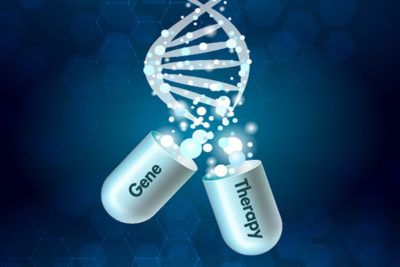The field of gene therapy has witnessed remarkable breakthroughs in recent years, offering hope for millions of individuals affected by genetic diseases. This cutting-edge approach involves manipulating genes within a person’s cells to address the root cause of these conditions. By targeting and correcting genetic defects, gene therapy holds the potential to provide long-lasting and even curative treatments for a wide range of ailments.
The Promise of Gene Therapy
Gene therapy represents a paradigm shift in medical treatments for genetic diseases. Unlike traditional pharmaceuticals that typically manage symptoms, gene therapy aims to correct the underlying genetic abnormalities themselves. By providing functional copies of faulty genes or modifying existing genes, this innovative approach offers the potential for a complete cure.
One of the most remarkable aspects of gene therapy is its versatility. It can target both inherited genetic diseases, caused by mutations in a person’s genome, as well as acquired genetic diseases, resulting from changes in gene expression over time. This opens up possibilities for treating a wide range of conditions, including genetic disorders like cystic fibrosis, muscular dystrophy, sickle cell anemia, and many others.
Gene Editing Tools: A Game Changer
Advancements in gene editing tools have significantly contributed to the progress of gene therapy. The development of CRISPR-Cas9, a revolutionary gene-editing technology, has transformed the landscape of genetic manipulation. CRISPR, short for Clustered Regularly Interspaced Short Palindromic Repeats, allows scientists to modify specific sections of DNA with unprecedented precision and efficiency.
This breakthrough technique enables researchers to edit out faulty genes, insert beneficial genes, or modify existing genes, all with remarkable accuracy. By utilizing CRISPR, scientists can target the root cause of genetic diseases and potentially eradicate them from a patient’s cells.
Promising Successes
Several notable successes in the field of gene therapy have bolstered its credibility and given hope to patients worldwide. One of the most significant breakthroughs occurred in 2017, when the FDA approved the first gene therapy treatment for a genetic disorder called spinal muscular atrophy. This approval marked a crucial milestone and set the stage for further advancements in the field.
Another groundbreaking application of gene therapy came in the form of Luxturna, a treatment for a genetic form of blindness called Leber congenital amaurosis. This therapy demonstrated the ability to restore vision in patients with this previously untreatable condition, offering a new lease of life to those affected.
Furthermore, ongoing clinical trials for inherited blood disorders like sickle cell disease and beta-thalassemia have shown promising results. In some cases, patients previously requiring frequent blood transfusions have been able to maintain hemoglobin levels without transfusions, greatly improving their quality of life.
Challenges and Future Outlook
While the progress in gene therapy is undeniably remarkable, challenges still exist. The complexities of gene delivery, potential immune responses, and the need for further fine-tuning of gene-editing techniques pose ongoing hurdles for researchers and clinicians.
However, the future of gene therapy looks promising. Scientists are continuously refining existing techniques and exploring new approaches to optimize success rates and minimize side effects. As technology advances, it is anticipated that gene therapy will become even more accessible and widely adopted, providing new hope for individuals affected by genetic diseases.
Ultimately, gene therapy holds immense potential for revolutionizing medicine. Its ability to address the root causes of genetic diseases and potentially provide long-lasting cures brings hope to millions of individuals and their families. With continued advancements and breakthroughs, gene therapy could reshape the landscape of healthcare, offering renewed possibilities for a healthier future.
